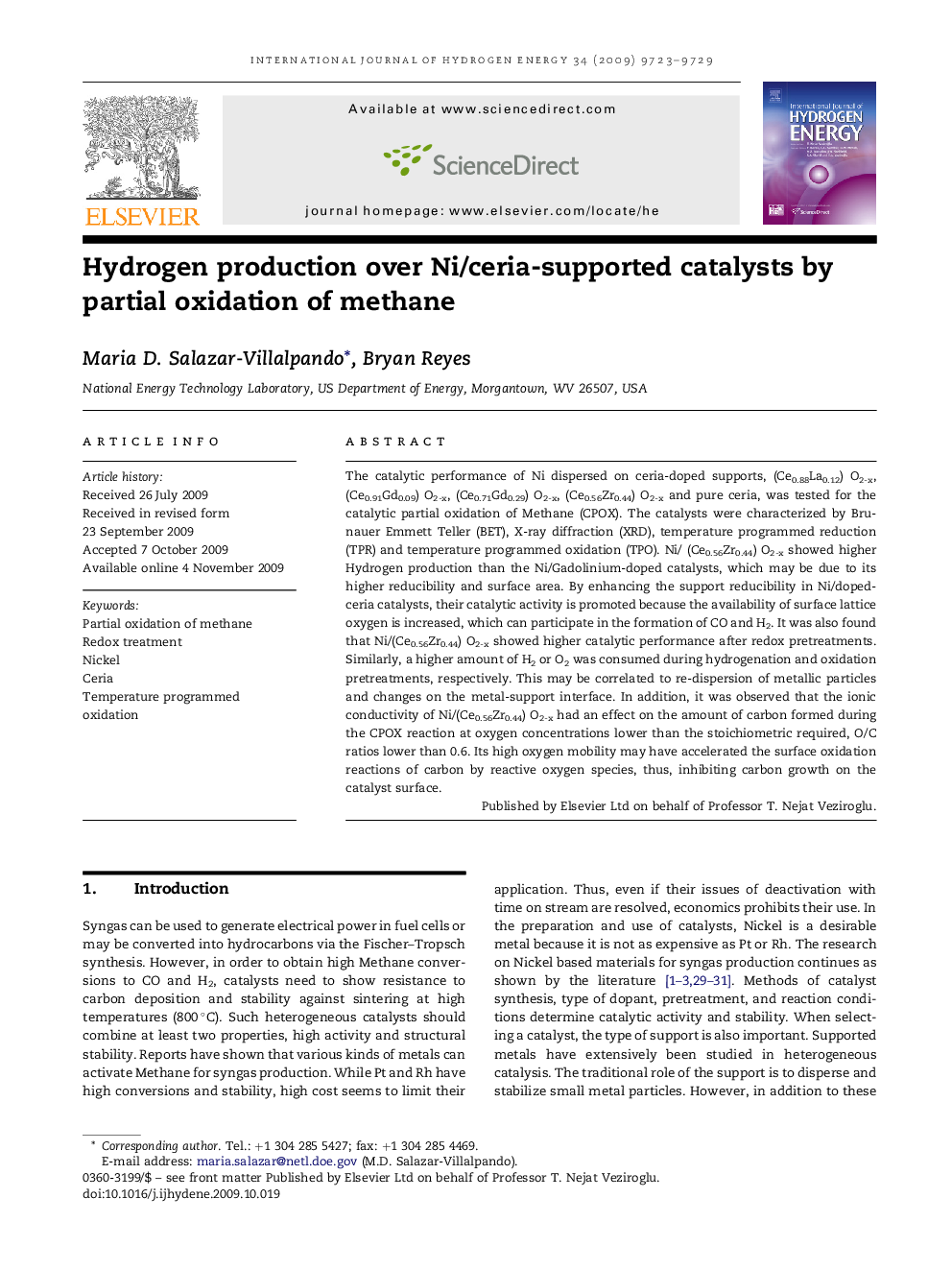| Article ID | Journal | Published Year | Pages | File Type |
|---|---|---|---|---|
| 1278199 | International Journal of Hydrogen Energy | 2009 | 7 Pages |
The catalytic performance of Ni dispersed on ceria-doped supports, (Ce0.88La0.12) O2-x, (Ce0.91Gd0.09) O2-x, (Ce0.71Gd0.29) O2-x, (Ce0.56Zr0.44) O2-x and pure ceria, was tested for the catalytic partial oxidation of Methane (CPOX). The catalysts were characterized by Brunauer Emmett Teller (BET), X-ray diffraction (XRD), temperature programmed reduction (TPR) and temperature programmed oxidation (TPO). Ni/ (Ce0.56Zr0.44) O2-x showed higher Hydrogen production than the Ni/Gadolinium-doped catalysts, which may be due to its higher reducibility and surface area. By enhancing the support reducibility in Ni/doped-ceria catalysts, their catalytic activity is promoted because the availability of surface lattice oxygen is increased, which can participate in the formation of CO and H2. It was also found that Ni/(Ce0.56Zr0.44) O2-x showed higher catalytic performance after redox pretreatments. Similarly, a higher amount of H2 or O2 was consumed during hydrogenation and oxidation pretreatments, respectively. This may be correlated to re-dispersion of metallic particles and changes on the metal-support interface. In addition, it was observed that the ionic conductivity of Ni/(Ce0.56Zr0.44) O2-x had an effect on the amount of carbon formed during the CPOX reaction at oxygen concentrations lower than the stoichiometric required, O/C ratios lower than 0.6. Its high oxygen mobility may have accelerated the surface oxidation reactions of carbon by reactive oxygen species, thus, inhibiting carbon growth on the catalyst surface.
